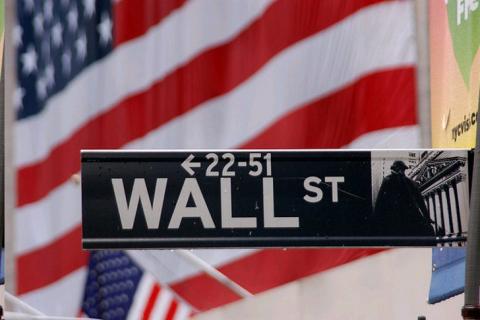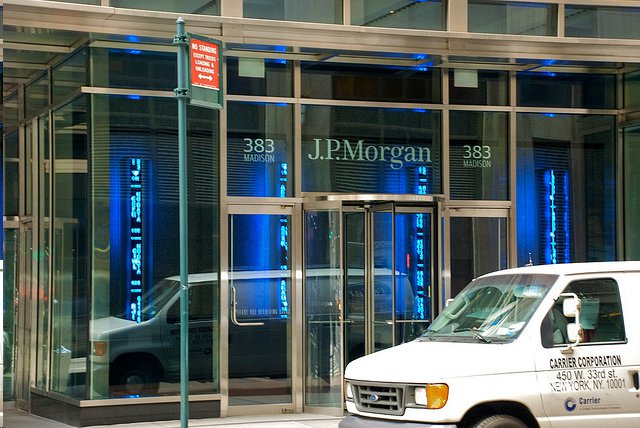Have We Done Enough to Prevent Another Financial Catastrophe?

More than three years after Dodd-Frank financial reform was signed into law by President Barack Obama and five years since Lehman Brothers failed, touching off a global financial crisis, U.S. financial markets remain vulnerable to the kind of meltdown that brought the economy to its knees in 2008.
Dodd-Frank –which is supposed to prevent large financial institutions from taking excess risk of the kind that caused JP Morgan to lose more than $6 billion on a series of failed derivatives trades in London—is slowly but surely being watered down as it wends thorough the regulatory agencies charged with converting its broad mandates into operational rules.
The Devil Is in the Details
In late August, President Obama was compelled to summon financial regulators to the White House to exhort them to finish implementing Dodd-Frank.
Obama’s impatience is understandable.
As of mid-September only 40 percent of Dodd-Frank’s 398 rules have been fleshed out with regulatory language, with many of the most critical rules being among the yet-to-be-finalized 240, according to the Washington Post.
Among the rules that have yet to be put into effect are capital and margin requirements for derivatives, new mortgage disclosure regulations, enhanced regulatory oversight of large banks, and the Volcker Rule.
The courts have struck down rules at the behest of banks, including the provision that would have capped the debit card fees banks can charge.
Other rules have been bogged down by the sheer breadth of changes they would cause and regulators’ concern for setting off a chain of unanticipated consequences.
The snail’s pace of rules writing is also attributable to the differing missions of the federal agencies overseeing the process.
Dodd-Frank didn’t reduce the number of regulators overseeing financial institutions, as many of the most ardent supporters of financial reform advocated, so the pace of rules-writing is giving banks the time to employ lobbyists to disrupt and delay the law’s implementation.
Money Talks, Stronger Regulation Walks
In his book, Act of Congress, chronicling the cobbling together and passage of Dodd-Frank, Robert Kaiser, associate editor and senior correspondent of The Washington Post, notes that the financial industry employed 2,700 lobbyists (including 1,447 former government employees), in ’09 and ’10 to thwart reform, spending $750 million in the process. While not completely successful, the industry managed to avoid some of the more onerous measures being considered on Capitol Hill, including the breakup of large banks.
The money has continued to flow during the rules-writing phase with the industry spending $665 million from 2010 through 2012 easily retaining the title of Washington’s biggest giver, according to the Center for Responsive Politics.
The financial industry has used its money, clout, and connections to slow up the rules-making process and bend it to their advantage.
Case in point: Dodd-Frank provisions that were supposed to prevent another mortgage-backed security market bubble of the sort that was one of the major causes of the financial crisis, have been watered down so much that some industry insiders are saying that given the right conditions there is nothing to prevent a replay of the market mania of the 2000s.
In fact, with the U.S real estate market recovering banks, with an assist from rating agencies once again, are beginning to pump out once scorned, now embraced, mortgage-backed securities.
Bank lobbyists are also busy slowing the implementation of the so-called Volcker Rule. The Volcker Rule attempts to curb risk taking at financial institutions that rely on federal guarantees such as deposit insurance by forbidding them from trading their own capital.
The banking industry says the Volcker Rule limits “safe forms of trading” and would seriously impact profits at some of the nation’s largest banks.
Proprietary trading has brought banks huge profits and huge losses, however, including JP Morgan’s $6 billion hit as a result of a bad derivatives bet in 2012. [In early September, U.S and U.K. regulators fined the bank $920 million for engaging in “unsafe and unsound practices.”] Yet the Volcker Rule continues to be tied up by bureaucratic infighting and pressure from the banking lobby.

What Happened?
Financial institutions’ ability to shape regulation and thwart any meaningful change stems in part from the dominant role the industry plays in the U.S. economy.
Thanks in part to federal regulatory and tax policies, financial services’ share of total domestic profits went from 15 percent in the early 1980s to around 40 percent today. Those profits provide the ammunition to protect the industry’s vested interests in Washington and state capitals across the country. Dodd-Frank was just the latest and perhaps most serious threat to the industry’s position.
One Dodd-Frank response to banks having passed on scores of bad mortgages via securitization to unsuspecting investors during the real estate boom of mid-2000s was to require issuers of asset-backed securities to retain at least 5 percent of a security’s credit risk; in other words, to have a little skin in the game.
Importantly, the 5 percent doesn’t apply to qualified residential mortgages (QRM) – a term regulators were left to define.
In other words, Dodd-Frank doesn’t ban securitization of nonqualified residential mortgages -- it only requires lenders to retain a small portion of the credit risk, and left open the door for the industry to help shape the definition of QRM.
In addition, more than two years after the deadline they were given by Dodd-Frank to come up with rules governing mortgage securitization, regulators are still mulling over how to define qualified residential mortgage.
Getting a Handle on a $1.2 Quadrillion Market
While the pawning off of bad mortgages to investors was the geneses of the 2008 crisis, the creation of derivatives based on the bad mortgages made what might have been a manageable problem into a catastrophe.
Unregulated mortgage-backed derivatives were a major source of the recklessness leverage that went bad, imposing huge losses on scores of financial firms requiring a federal bailout of many of them.
Dodd-Frank calls for more exchange-trading and greater scrutiny of the $1.2 quadrillion market (of which at least $12 trillion in cash is at risk), but exempts many derivatives.

The banking lobby and its Congressional allies are working to gut the rules, including cross-border guidelines, governing the few derivatives that will be regulated.
In the July editorial “The Latest Assault on Bank Reform,” the New York Times says that without strong cross-border rules derivatives regulation will be meaningless because the big American banks that dominate the global market in derivatives will simply engage in risky trades and rank speculation abroad.
The delay in implementing a good chunk of Dodd Frank ‘s provisions and the watering down of those that have been finished begs the question: Has the law done enough to reduce the risk that the next financial crisis will cause as much damage as the last?
The last one was a dozy. According to a study by the Government Accountability Office released earlier this year, the 2008 financial crisis cost the U.S. economy more than $22 trillion.
Alternative Outcome
No wonder that critics of Wall Street from the left and right urged (and continue to fruitlessly urge) Congress to do much more to reign in financial institutions than Dodd-Frank has.
In his book The Payoff, longtime lobbyist and Democratic Senate aide, Jeff Connaughton, outlines what radical reformers in Congress would have done if they had their way.
Connaughton says they would have reversed the key 1990s deregulatory measures that were largely responsible for bringing on the 2008 crisis: The killing of the Depression-era law, Glass-Steagall, that separated commercial from investment banking, and a late 1990s law baring any regulation of financial derivatives, the market that would be the center of the 2008 crisis.
Congressional proponents of stronger reform would have also put strict limits on the size, leverage, and trading activities of larger financial institutions and require banks to hold more capital to cover losses.
In their view, only structural reform of Wall Street will prevent the next crisis.
Even supporters of Dodd-Frank, including Wall Street Journal columnist David Wessel and Fortune senior editor Alan Sloan, acknowledge that proposals put forward by Wall Street critics would do more to prevent a future financial meltdown.
In their book Political Bubbles, political scientists Nolan McCarty, Keith Poole, and Howard Rosenthal say that 2008 was a “wasted crisis” because government institutions failed not in the run-up to the near total collapse of the financial system, but also in its aftermath. Dodd-Frank, they argue, exemplifies a long historical pattern (except for the New Deal) of weak and counterproductive governmental responses to breakdowns in the financial markets.
Today the financial industry is more concentrated than it was before the 2008 crisis, and it is leveraged to the hilt, according the book The Bankers New Clothes – What’s Wrong with Banking and What to Do about It, written by Anat Admati, Stanford Business School, and Martin Hellwig , Max Planck Institute for Research on Social Goods.
The authors argue that mega-banks’ excess leverage and risk taking continue to threaten financial stability. Admati and Hellwig believe that large banks may not only be too big to fail, but too big to save.
The headline of Admati’s August 26, 2013 op-ed in the New York Times says it all: “We’re All Still Hostages to the Big Banks.”
Author Bio:
Mark Goebel is a contributing writer at Highbrow Magazine.
Photos: Sjeord Van Oosten (Flickr); Vanderwal (Flickr); Alex Proimos (Wikipedia Commons).




























































































































































































































































































































